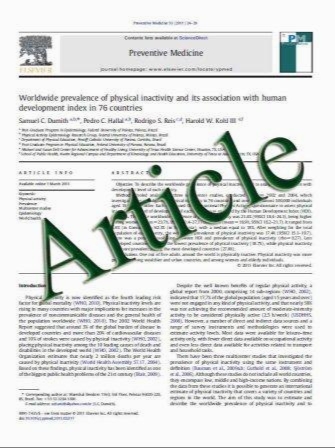Urinary transforming growth factor beta-1 as a marker of renal dysfunction in sickle cell disease
- نوع فایل : کتاب
- زبان : انگلیسی
- مؤلف : Davoud Mohtat & Rosemary Thomas & Zangfang Du & Yaa Boakye & Thomas Moulton & Catherine Driscoll & Robert Woroniecki
- چاپ و سال / کشور: 2011
Description
Renal dysfunction affects 5–18% of patients with sickle cell disease (SCD). To date, no studies have described urinary levels of transforming growth factor â-1 (TGF-â1), a marker of fibrosis, and neutrophil gelatinaseassociated lipocalin (NGAL), a marker of acute/chronic kidney disease, as biomarkers in identifying patients at risk of developing renal disease in SCD. We hypothesized that SCD subjects will have increased urinary excretion of TGF- â1 and NGAL compared with healthy controls (CTR). We examined 51 SCD subjects: 42 HbSS, 8 HbSC, and 1 HbSD. Sixteen out of 42 patients with HbSS were on hydroxyurea (HU). Urinary excretion of TGF-â1 was 26.4±1.5 pg/mgCr in SCD subjects vs 15.0±2.4 pg/mgCr in CTR (p<0.00001). SCD patients with hemoglobin<9 g/dl had higher urinary TGF-â1 than patients with milder anemia (p=0.002). Urinary TGF-â1 trended lower in HbSS patients treated with HU (23.61±2.6 pg/mgCr), vs patients not on HU (27.69±1.8 pg/mgCr; p=0.055). There was no correlation between urinary TGF-â1 and microalbuminuria or estimated glomerular function. There was no difference in urinary NGAL in SCD patients vs CTR. We suggest that urinary TGF-â1 may serve as a marker of early renal injury in SCD.
Pediatr Nephrol (2011) 26:275–280 DOI 10.1007/s00467-010-1677-9 Received: 28 June 2010 / Revised: 14 September 2010 / Accepted: 17 September 2010 / Published online: 25 November 2010


